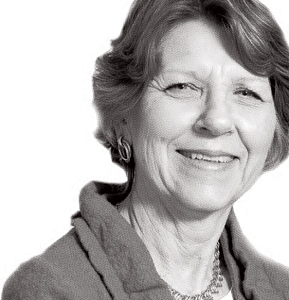Ms. Sawitsky is director of the Office of Patents & Licensing & Business Development at the New York Blood Center. "My skills are in seeing opportunities where someone doesn’t see an opportunity."
 In the book, The Innovator’s DNA (2011, Harvard Business Review Press), authors Jeff Dyer, Hal Gergersen and Clayton M. Christensen describe innovative thinkers as having five distinctive traits: They naturally see connections between fields, problems or ideas that others find unrelated; they’re constant questioners; they’re intense observers of the world around them; they seek out conversations with people with diverse backgrounds and perspectives; and they like to experiment with new ideas and experiences.
In the book, The Innovator’s DNA (2011, Harvard Business Review Press), authors Jeff Dyer, Hal Gergersen and Clayton M. Christensen describe innovative thinkers as having five distinctive traits: They naturally see connections between fields, problems or ideas that others find unrelated; they’re constant questioners; they’re intense observers of the world around them; they seek out conversations with people with diverse backgrounds and perspectives; and they like to experiment with new ideas and experiences.
Barbara A. Sawitsky, director of the Office of Patents & Licensing & Business Development at the New York Blood Center, certainly fits this description.
Recently, she read a draft patent application describing a technique for growing cells that had been developed in one of the labs at the New York Blood Center’s Lindsley F. Kimball Research Institute. “After reading the application, I wasn’t sure the technique was inventive, novel and had value, so I went to the scientist,” Ms. Sawitsky says. “She said, ‘I’ll look at it again; maybe the value is really in a different use.'” The scientist then described an alternate use for the technique, convincing Ms. Sawitsky that the method did have licensing and commercial potential. “We filed the amended patent application,” Ms. Sawitsky recalls.
“My skills are in seeing opportunities where someone doesn’t see an opportunity,” Ms. Sawitsky, also a member of the advisory board of Adelphi’s Center for Health Innovation, explains. “The questions I ask are, ‘So what if we did this?’ ‘Could you use this technology in a different way?'”
“I’m not afraid to ask a scientist naïve questions, because it helps me to better understand their research.”Ms. Sawitsky didn’t plan a career in technology transfer. When the Queens native was at Adelphi, she majored in biology with the expectation that she’d eventually earn a Ph.D. and do research. Intrigued by the business side of science, she stayed on to earn an M.B.A. But even if she’d wanted to be involved in the process of getting technologies and therapies out of the lab and into the world, when she was at college, most labs weren’t engaged in licensing their inventions. until 1980, the federal government owned all inventions made under federally funded research programs. The passage of the Bayh-Dole Act that year allowed universities and nonprofits who receive federal funding for research to retain ownership of their inventions and prompted them to start marketing and licensing their discoveries.
After Adelphi, Ms. Sawitsky held jobs in cancer research before moving into corporate marketing and then starting her own healthcare consulting company, selling the business to an accounting firm after about a decade. She learned how a tech transfer office functioned when the State university of New York at Stony Brook hired her to be the deputy director of its technology transfer office. Then the City university of New York recruited her to get its new technology transfer office off the ground. Following several years as director of business development for OSI Pharmaceuticals, doing in-licensing of new compounds and out-licensing of programs that were no longer a strategic fit, Ms. Sawitsky moved into her current job at NYBC about six years ago.
In the early 1980s, a group of scientists at NYBC developed a method to inactivate lipid-enveloped viruses such as HIV and hepatitis in plasma used for blood derivatives and biotechnology products. Coming at a time when there were no diagnostic tests for HIV and hepatitis, the invention saved tens of thousands of lives, and it continues to be one of the most prevalent methods of virus inactivation in use today.
These days, NYBC scientists are still investigating new ways to control HIV by developing new drugs. Other research programs include growing platelets from cord blood stem cells for eventual transfusion and developing an adjuvant that will enhance vaccine efficacy.
Strategically licensing and managing the portfolio of the L.F. Kimball Research Institute’s inventions ensures that NYBC’s research can move from “bench to bedside” and benefit the public.
Protecting and marketing discoveries that have so much impact on people’s lives is a big job, but Ms. Sawitsky is energized, not daunted, by the importance of the task. “What I love about this job is that every day is an intellectual challenge,” she says. “It’s never boring. I like innovation and activity and change.”
For further information, please contact:
Todd Wilson
Strategic Communications Director
p – 516.237.8634
e – twilson@adelphi.edu